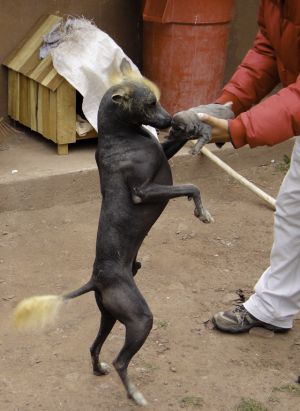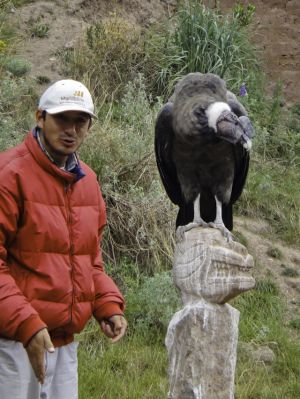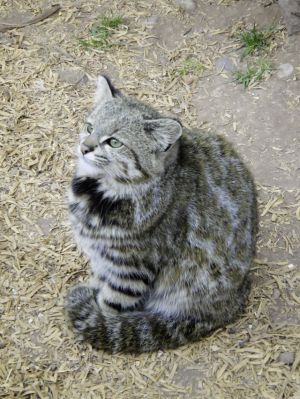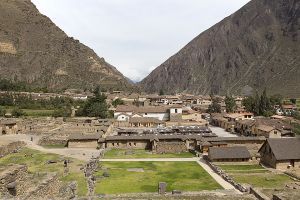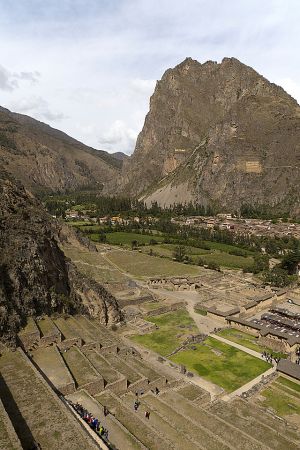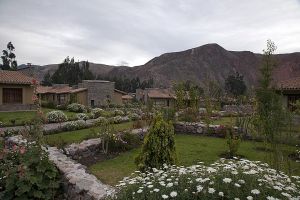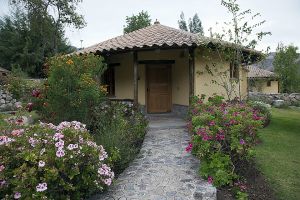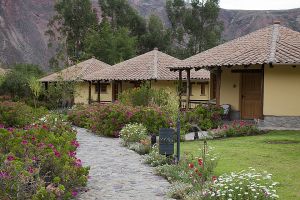Today is departure day for the Sacred Valley, en route to Machu Picchu. Prior to reaching Pisac, we stop at the Ccochahuasi animal sanctuary, which is home to a number of animals who have met with accidents or deliberate human cruelty. The sanctuary rescued 3 condors that had been poisoned by farmers, who in their ignorance believed that these carrion birds had been hunting their livestock. The sanctuary staff believes that the youngest condor (around 18 months old) may be able to be released back into the wild at some point. I tell the staff about the plight of the eagles in Colca Canyon, and they confirm that that the practice of trapping eagles for tourist photos is illegal and punishable by 5 years in jail. The problem with this is that legality is a fluid concept in Peru, much like adherence to the road rules (there doesn’t appear to be any!) The Inca dog in the gallery below is meeting one of his pups, but there seems to be some doubt over paternity, judging by the look of the pup!
The sanctuary is also home to this poor rescued coati, which had the toes on his rear paws cut off as a snakebite antidote according to local beliefs.
Pisac is famous for its artisan market, which has nothing to differentiate it from every other Peruvian market. There is an open air café in the market which is also one of the oldest bakeries in the area. Morning tea is a freshly baked empanada, which is a better choice than the bakery’s other speciality – cuy (guinea pig). The café had a La Cimbala coffee machine, so I order a cappuccino, to continue my cappuccino tasting expedition in South America. There is at least 5 minutes of steam noises before the cappuccino arrives. I have sent out a search party for the caffeine component, as what arrives is best described as a very milky latte. Whilst drinkable, a cappuccino it ainʾt.
There are two highlights in the Sacred Valley. The first are the Incan ruins at Ollantaytambo. Climbing to the top of the ruins is a lung-bursting exercise at altitude, but well worth it for the view down the valley, and across to the Incan grainary perched on the side of the hill downwind of the ruins.
The second highlight is the hotel Sol y Luna, near Ollanta. Some serious money has been spent to carve out this oasis in the valley – 40+ casitas (round huts) in beautifully landscapes gardens. Being low season, there are only 5 guests on the night I stay there. The hotel also has a ranch in its grounds, with 20 odd pampered Peruvian Paso horses – a complete contrast to the mistreated animals in the animal sanctuary earlier in the day. One of the advantages of travelling alone is that you are invited behind the scenes more often. One of the managers of the ranch noticed me peering in the stables and gave me a guided tour in Spanglish, including showing me the barn where they grow the postres (dessert) for the horses from seed. I still haven’t worked out what it was, but it was grown as a supplement to the horses’ basic diet of lucerne and greens. Each of the horses had their own name, usually derived from their markings – eg one of the mares was called Luna, for the crescent moon marking on her nose, another Estrella for her star marking etc. I am sorry that I only have one night in this fabulous location. Less fabulous is the rest of the Sacred Valley – it has the highest levels of alcoholism in Peru, and doesn’t bear much resemblance to what once was the Sacred Valley of the Incas.

